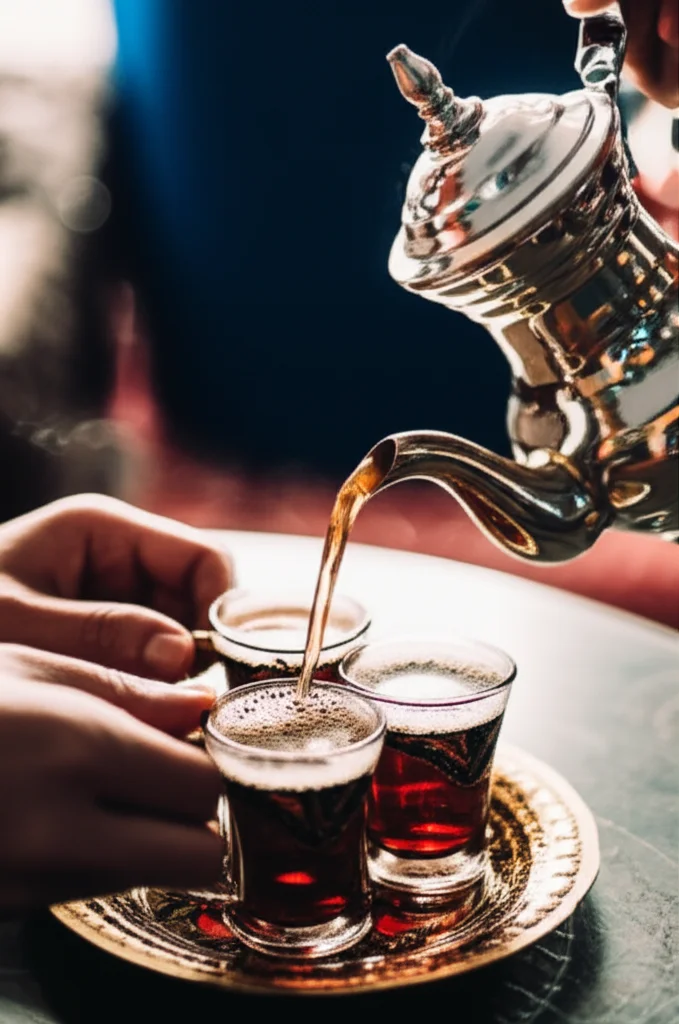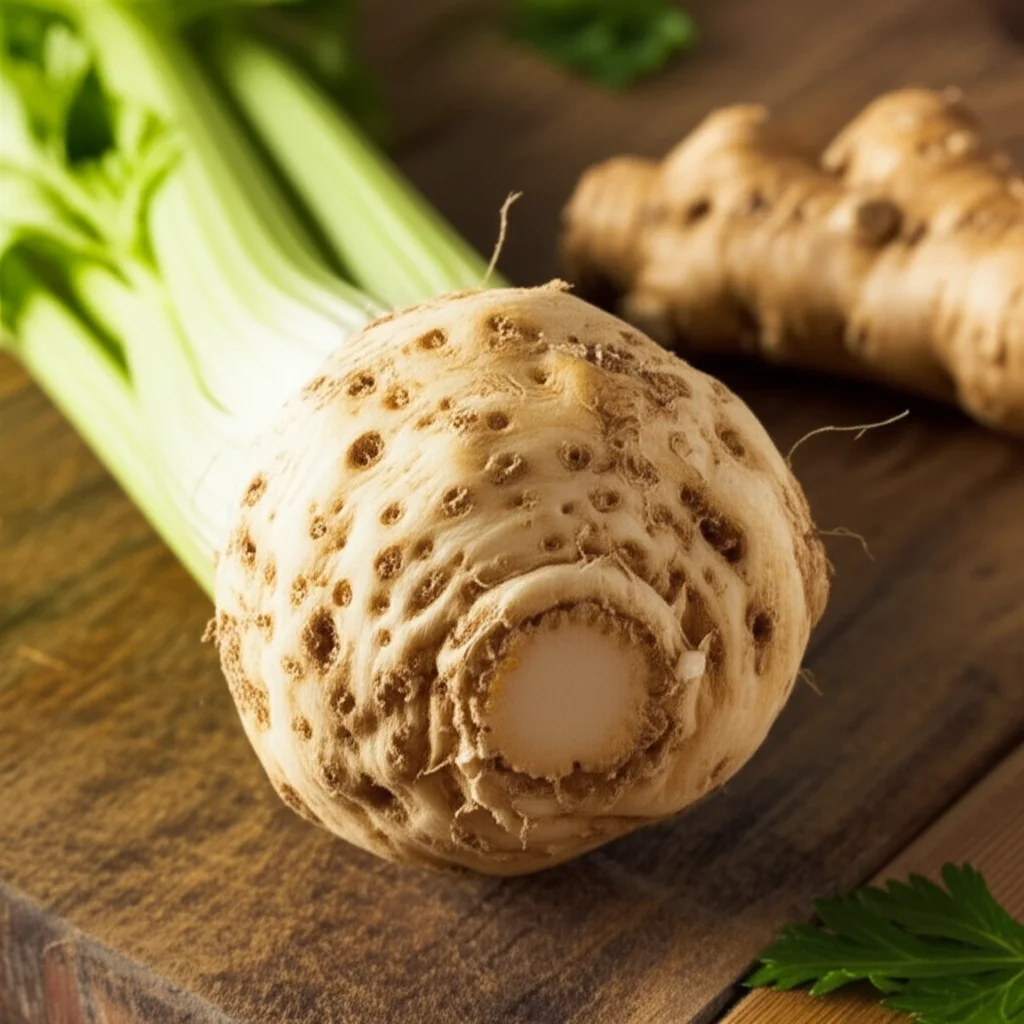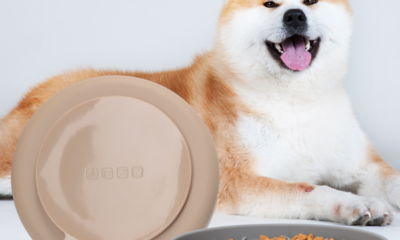General
Yalla Choy: More Than Just Tea, It’s a Cultural Invitation

You hear the phrase casually tossed across a table, shouted from a kitchen, or whispered with a smile among friends: “Yalla, choy!” It’s more than a simple suggestion; it’s an invitation, a moment of pause, and a deeply ingrained ritual of hospitality that stretches across the Arab world and beyond. But what exactly does it mean? Is it just about drinking tea, or is there a richer story steeped in this simple phrase?
At its most direct translation from Arabic, “Yalla” means “let’s go” or “come on,” and “choy” is a colloquial term for tea, influenced by global trade routes (from the Chinese “chá”). So, “Yalla choy!” literally translates to “Let’s go, tea!” or more naturally, “Come on, let’s have tea!” However, to stop at the translation is to miss the entire heart of the matter. This phrase is a key that unlocks a world of social connection, tradition, and warmth.
The Deeper Meaning: The Culture in a Cup
“Yalla choy” isn’t just about consuming a beverage. It’s a social contract. It’s a way to:
- Pause Time: In a world that’s always rushing, “yalla choy” is a command to stop. It carves out a mandatory break from work, worry, or the daily grind to simply be with another person.
- Offer Hospitality: In Arab and Middle Eastern cultures, offering tea to a guest is almost a sacred duty. It’s the first thing you do when someone enters your home. To refuse is almost unthinkable. “Yalla choy” is the embodiment of this generosity.
- Facilitate Conversation: Tea is the catalyst for dialogue. It’s much easier to discuss life, business, family, or dreams with a warm cup in your hand. The ritual of pouring and sipping provides a comfortable rhythm to the flow of conversation.
- Solve Problems: A huge number of disputes, business deals, and family matters have been resolved over a pot of tea. There’s a famous Arabic saying that loosely translates to, “We will drink tea until the problem becomes clear.”
The Tea Itself: What’s in the Pot?
When someone says “Yalla choy,” what kind of tea are they likely serving? While preferences can vary by region and family, there are a few classic contenders.
1. Moroccan Mint Tea (Atay)
Often called “Berber whiskey,” this is perhaps the most ceremonial. It’s a green tea (usually Chinese Gunpowder tea) steeped with fresh spearmint leaves and a generous amount of sugar. It’s poured from a height into small glasses to create a froth, which is a sign of a good pour and a hospitable host.
- The Ritual: The preparation and pouring are an art form. The tea is often poured and poured back into the pot multiple times to mix the flavors before being served to guests.*
2. Egyptian/Saudi Chai (Koshary or Saiidi)
In many parts of the Levant and Egypt, “choy” often refers to a strong black tea. It can be served plain (sada) or with sugar (mazboot meaning “just right” or ziyada meaning “extra”).
- The Ritual: It’s commonly boiled directly in a pot, often with fresh herbs like mint (na’ana*) or sage (maryamiya). It’s strong, dark, and served in small glasses.
3. Turkish Çay
While linguistically different (“çay” is the Turkish word), the culture is deeply similar. Turkish tea is brewed using a double-stacked teapot (çaydanlık), resulting in a very strong concentrate that is then diluted with hot water to each drinker’s preference.
- The Ritual: Served in delicate, tulip-shaped glasses without handles, it’s a ubiquitous sight in homes and shops everywhere.*
The “Yalla Choy” Moment: When Do You Hear It?
The beauty of the phrase is its versatility. It fits seamlessly into countless everyday scenarios:
- The Morning Kickstart: Instead of a solitary coffee run, it’s a call to a family member: “Yalla choy, we need to plan our day.”
- The Afternoon Break: The post-lunch slump is met with, “Yalla choy, let’s take a break and talk.”
- The Evening Wind-Down: After dinner, the tea pot comes out again. It’s a digestif and a way to extend the company before guests leave.
- The Business Meeting: In many shops from Marrakech to Dubai, discussing a price isn’t complete without first sharing a tea. It builds rapport and trust.
- The Unexpected Guest: The moment someone arrives, the automatic response is to put the kettle on and say, “Yalla, sit, choy!”*
How to Embrace the “Yalla Choy” Spirit (Even if You’re Not Middle Eastern)
You don’t need a specific type of tea or a fancy pot to capture the essence of this tradition. It’s about the intention. Here’s how you can bring this philosophy into your own life:
- Be the Instigator: Don’t wait for a special occasion. Be the person who says, “Hey, let’s put the kettle on and chat for ten minutes.” Your “yalla choy” moment can be with coffee, herbal tea, or even hot chocolate.
- Prioritize Presence: When you do have your tea moment, be there. Put your phone away. It’s about the person across from you, not the screen in your hand.
- Offer Generously: The act of making a drink for someone else is a simple but profound act of care. It says, “Your comfort is important to me.”
- Listen: The tea is the excuse; the conversation is the purpose. Practice active listening and enjoy the exchange.
A Phrase That Builds Bridges
“Yalla choy” is a beautiful example of how language and food culture intertwine to create social glue. It’s a phrase that transcends its simple words to become a symbol of welcome, patience, and human connection. In a time where digital interaction often replaces face-to-face conversation, the principle behind “yalla choy” is more valuable than ever.
Related Posts
Pravi Celer: Unearthing the Deliciousness of Celery Root (Celeriac)
Markiseteppe Fabric: The Ultimate Outdoor Shade Solution in 2025
General
The Shihuanuo: Your Complete Guide to the Shih Tzu Havanese Mix

Imagine a small, fluffy companion with the soulful eyes of a Shih Tzu and the playful, spirited charm of a Havanese. This isn’t a fictional creature from a storybook; it’s the delightful reality of the Shihuanuo (pronounced shee-wah-nwo), one of the most charming and affectionate “designer dogs” you can welcome into your home. A cross between the regal Shih Tzu and the cheerful Havanese, this hybrid combines the best traits of two beloved toy breeds into one irresistible package.
If you’re looking for a lapdog with personality, intelligence, and a hypoallergenic coat, you’ve come to the right place. This comprehensive guide will walk you through everything you need to know about the Shihuanuo, from its temperament and grooming needs to health considerations and how to find a reputable breeder.
What Exactly is a Shihuanuo?
The Shihuanuo is a first-generation (F1) crossbreed, meaning it’s a direct mix of a purebred Shih Tzu and a purebred Havanese. As a designer dog, its primary purpose is to be a companion animal, blending the desirable characteristics of its parent breeds.
- Shih Tzu Parent: Known as the “Lion Dog,” the Shih Tzu is an ancient breed with roots in Tibetan and Chinese royalty. They are known for their affectionate, outgoing, and sometimes stubborn nature. Their long, flowing double coat is a signature trait.
- Havanese Parent: Hailing from Cuba, the Havanese is the national dog of that country. They are intelligent, trainable, and incredibly social “velcro dogs” that thrive on human interaction. They have a silky, soft, and lightweight single coat that is considered hypoallergenic.
By combining these two, breeders aim to create a healthy, happy, and well-rounded companion that minimizes some of the potential health issues found in purebred lines.
Appearance: A Surprise in Every Litter!
One of the most exciting things about mixed-breed dogs is their unpredictability. A Shihuanuo can take after either parent or be a perfect blend of both. However, there are some general characteristics you can expect.
- Size: As a toy breed mix, the Shihuanuo is small. They typically weigh between 7 to 15 pounds (3 to 7 kg) and stand about 9 to 11 inches (23 to 28 cm) tall at the shoulder.
- Coat: This is where the biggest variation occurs. Their coat can be:
- Long and silky like a Havanese.
- Thick and double-coated like a Shih Tzu.
- Somewhere in between—wavy and soft. Common colors include black, white, cream, brown, silver, and any combination of these (parti-color).
- Face: They often have a sweet, expressive face with dark, round eyes. The muzzle can be slightly longer than a Shih Tzu’s but shorter than a Havanese’s. Their ears are typically floppy and covered in soft hair.
- Build: They have a sturdy, compact body with a plumed tail that often curls over their back.*
Temperament and Personality: A Bundle of Joy and Love
If you want a dog that will be your shadow and best friend, the Shihuanuo fits the bill perfectly. Their temperament is generally a winning combination of sweet and spunky.
- Affectionate and Loyal: This breed is a quintessential “lap dog.” They form incredibly strong bonds with their families and love to cuddle. They are true companions who want to be involved in every aspect of your day.
- Playful and cheerful: Inheriting the Havanese’s happy-go-lucky attitude, Shihuonuos have a playful side. They enjoy short bursts of playtime indoors and will happily chase a ball or play with puzzle toys.
- Good with Families and Other Pets: Their gentle and friendly nature makes them excellent pets for families with older, respectful children. They usually get along well with other dogs and even cats, especially if socialized from a young age.
- Intelligent but Sometimes Stubborn: They are smart cookies and can learn tricks quickly. However, they can inherit a stubborn streak from the Shih Tzu side, which may require a patient and consistent training approach with positive reinforcement.
- Alert and Watchful: Don’t let their size fool you. They make excellent little watchdogs and will bark to alert you of anything unusual. Early training can help manage excessive barking.*
Living with a Shihuanuo: Care, Grooming, and Exercise
Caring for a Shihuanuo is generally manageable, but their gorgeous coat does require a commitment.
Grooming Needs (High Maintenance) This is the most demanding aspect of owning this mix. To prevent mats and tangles, their coat requires daily brushing. Many owners opt for a shorter “puppy cut” to make maintenance easier. Regular grooming tasks include:
- Brushing: Daily with a slicker brush and metal comb.
- Bathing: Every 3-4 weeks with a good quality dog shampoo and conditioner.
- Eyes and Ears: Their eyes need daily wiping to prevent tear staining (common in Shih Tzus). Ears should be checked and cleaned weekly to prevent infections.
- Professional Grooming: A trip to a professional groomer every 4-6 weeks is highly recommended for trimming and a thorough clean.
Exercise Requirements (Low to Moderate) The Shihuanuo is perfectly suited for apartment living. Their exercise needs are modest.
- Daily Walks: One or two short walks (15-20 minutes each) per day are sufficient.
- Indoor Play: They get most of their exercise through indoor playtime. They love games of fetch down the hallway or learning new tricks for treats.
- Mental Stimulation: This is key! Their intelligent minds need to be engaged. Puzzle toys, hide-and-seek, and short training sessions are fantastic ways to keep them from getting bored.*
Training and Socialization Start training and socialization early. Their intelligence means they respond excellently to positive reinforcement methods like treats, praise, and play. Harsh methods will not work with this sensitive breed.
- Socialization: Expose your puppy to different people, places, sounds, and other animals in a positive way. This will help ensure they grow into a well-adjusted and confident adult dog.
- Potty Training: This can sometimes be a challenge with small breeds. Consistency, a regular schedule, and plenty of praise for successes are crucial. Many owners find using puppy pads helpful, especially for those living in apartments.
Health and Lifespan: What to Expect
As a crossbreed, the Shihuanuo can benefit from “hybrid vigor,” potentially reducing the risk of some inherited disorders common in purebreds. However, they can still be prone to health issues common in their parent breeds. A responsible breeder will health-test both parent dogs.
Common Health Concerns:
- Patellar Luxation: A common condition in small breeds where the kneecap dislocates.
- Eye Problems: Including cataracts, progressive retinal atrophy (PRA), and cherry eye.
- Hip Dysplasia: Though less common in small dogs, it can still occur.
- Dental Issues: Small dogs are prone to overcrowding and periodontal disease. Daily teeth brushing is highly recommended.
- Brachycephalic Issues: If they inherit the Shih Tzu’s shorter muzzle, they can be prone to breathing difficulties in hot or humid weather.*
Lifespan: With proper care, a balanced diet, and regular veterinary check-ups, a Shihuanuo has a typical lifespan of 12 to 15 years.
Is the Shih Tzu Havanese Mix the Right Dog for You?
Choose a Shihuanuo if you:
- Want a devoted, affectionate, and loyal companion.
- Live in an apartment or a home without a large yard.
- Are a less active individual, a senior, or a family with older children.
- Don’t mind committing to a high-maintenance grooming routine.
- Are home often, as they don’t like to be left alone for long periods.*
Think twice if you:
- Want a low-maintenance dog in terms of grooming.
- Have a very busy lifestyle and are away from home for 8+ hours a day.
- Are looking for a jogging or hiking partner.
- Prefer a completely silent dog (they can be vocal).
Finding a Shihuanuo Puppy
If you’ve decided this is the breed for you, your next step is finding a responsible source.
- Reputable Breeders: This is the best option. A good breeder will:
- Health-test their parent dogs.
- Welcome you to meet the puppies and their parents.
- Ask you many questions to ensure you’re a good fit.
- Provide a health guarantee and be available for support.
- Rescues and Shelters: Check breed-specific rescues for Shih Tzus and Havanese. You may find a mixed-breed dog or an adult Shihuanuo in need of a loving home. This is a wonderful way to give a dog a second chance.
Conclusion: A Heartwarming Companion
The Shihuanuo is more than just a cute face; it’s a breed overflowing with love, personality, and charm. They offer the perfect blend of regal grace and playful clownishness, making every day a little brighter. While their luxurious coat demands dedication, the reward is an unparalleled bond with a tiny, devoted friend who will undoubtedly become the heart of your home. If you’re ready for a lifetime of cuddles, companionship, and a little bit of glamour, the Shih Tzu Havanese mix might just be your perfect match.
related posts
What The Heckin Dog: A Deep Dive into the Canine Internet Craze
The Ultimate Guide to labradorii: Everything You Need to Know
General
Blazertje: The Dutch-Inspired Mini Blazer Trend You’ll Want in Your Wardrobe

If you’ve ever wandered through a fashion convo and heard the word “blazertje,” you might wonder what the fuss is about. In Dutch fashion circles, a blazertje is a charming, often cropped or lighter-weight blazer that adds polish without overdoing it. Think of it as the mini-me version of a classic blazer: versatile, often easier to dress up or down, and perfectly suited to a modern, layered wardrobe. In this guide, we’ll explore what a blazertje is, how it differs from a traditional blazer, and how to style one for work, weekends, or an evening out. By the end, you’ll have practical ideas to incorporate this trend into your outfits with confidence.
What exactly is a blazertje?
- Definition in plain terms: A blazertje is a smaller, lighter, or cropped version of a blazer. It’s designed to sit closer to the waist, often with a tailored cut, and it can come in a range of fabrics—from wool blends to cotton twill, linen, velvet, or satin.
- Why the term exists: The diminutive “-tje” in Dutch language makes the item sound friendly, approachable, and a touch playful. In fashion terms, it signals a blazer that feels a little more casual or versatile for daily wear than a full-length blazer.
- The vibe: Crisp, structured, and chic, but not stuffy. A blazertje works well with casual basics or elevated pieces, giving you that instant “put-together” look without trying too hard.
Blazertje vs blazer: key differences you’ll notice
- Length and silhouette: Traditional blazers tend to be longer, with more coverage, while blazertjes are often cropped or shorter in length, ending at or just above the hips.
- Weight and fabric: Blazers can be heavy wool or substantial suiting fabrics. Blazertjes lean toward lighter fabrics (cotton, linen, lightweight wool, or blends) that make them easier to layer in milder weather.
- Formality: A full-length, structured blazer can read more formal, while a blazertje tends to skew versatile for both workwear and casual outfits.
- Styling options: Because of the cropped shape, blazertjes pair particularly well with high-waisted pants, skirts, or dresses, creating balanced proportions.
How to style a blazertje: practical ideas for every moment
Work-ready looks
- Blazertje + tailored trousers + blouse: A sleek, monochrome palette (e.g., navy blazer with matching navy trousers and a crisp white blouse) reads professional and polished.
- Blazertje + pencil skirt + shell top: Tuck a slim shell top into a pencil skirt, add a cropped blazer, and finish with pointed-toe flats or modest heels for a refined office ensemble.
- Blazertje + wide-leg pants + belt: A cropped blazer over a high-rise wide-leg pant creates a modern, commanding silhouette. Cinch with a slim belt to define the waist.
Casual and weekend wear
- Blazertje + tee + jeans: The easiest formula. A simple tee, a well-fitting pair of denim, and a snappy blazertje instantly elevates a casual look.
- Blazertje + midi skirt + sneakers: For a chic yet comfortable day out, pair a light blazer with a flowy midi skirt and clean white sneakers.
- Blazertje + knit + shorts (in transitional weather): A soft knit under a structured blazer can bridge seasons when paired with tailored shorts or cropped pants.
Evening and dressier events
- Blazertje + slip dress: Layering a sleek blazertje over a satin or silk slip dress creates a refined, party-ready look without feeling overdressed.
- Blazertje + sequin top + tailored pants: For a touch of glam, team a cropped blazer with a sequined top and high-waisted trousers.
- Velvet or satin blazertje + midi dress: A luxe fabric blazer over a streamlined dress gives you a sophisticated, festive vibe.
Seasonal styling notes
- Spring and summer: Linen or cotton-blend blazertjes with light colors (stone, ivory, pastels) keep the look fresh and breathable.
- Fall and winter: Lightweight wool blends or velvet blazertjes layered over turtlenecks, sweaters, or fine-knit dresses add warmth without bulk.
Tips for choosing the right blazertje (fit, fabric, color)
- Fit and proportion
- Shoulders: The blazer shoulder should align with your natural shoulder line. No drooping or overly padded shoulders.
- Sleeves: Sleeve length should hit at or just above the wrist bone so a bit of cuff shows when you wear a long-sleeve top underneath.
- Jacket length: A good blazertje typically ends around the top of the hip bone or slightly lower, not at mid-hip or thigh length.
- Waist shape: Look for a gentle taper at the waist or a subtly shaped seam to avoid a boxy look.
- Fabric choices
- For daily wear: Cotton blends, lightweight wool, or denim-like twill offer durability and comfort.
- For warmer seasons: Linen blends or breathable fabrics help you stay cool.
- For evenings: Velvet or satin blends add a touch of luxe and elevate party-ready outfits.
- Colors and patterns
- Neutrals: Black, navy, gray, camel—the timeless trio that pairs with almost anything.
- Light colors: Ivory, soft tan, or pastel hues can brighten outfits and feel more seasonal for spring.
- Patterns: A pinstripe, herringbone, or windowpane pattern adds visual interest without overwhelming an outfit.
- Details to consider
- Lapel style: Notched lapels are classic and versatile; peak lapels can feel more fashion-forward and dressy.
- Closure: Single-breasted is most common and flattering for most body types; double-breasted can be chic for certain looks but requires careful fit.
- Pockets: Functional pockets add practicality without sacrificing silhouette; ensure they lay flat when the blazer is worn closed.
Care tips to keep your blazertje looking sharp
- Follow care labels: Some blazertjes are machine-washable (cottons and blends), while others require dry cleaning (especially wool or velvet).
- Proper storage: Hang on a sturdy hanger to maintain shoulder line; avoid crowded closets to prevent wrinkles.
- Steaming vs ironing: A gentle steamer removes wrinkles without stress. If you must iron, use a low heat setting and a pressing cloth to protect delicate fabrics.
- Spot treatment: Treat spills promptly with a blotting motion, not rubbing, to prevent fabric from pilling or staining.
Where to shop for blazertjes and what to expect in price ranges
- Budget-friendly options: Many fast-fashion retailers offer cropped or lightweight blazertjes in a range of colors and fabrics. Great for trying the trend without a big commitment.
- Mid-range options: Contemporary brands often provide a better cut and fabric quality, with more tailoring options (notched vs peak lapels, different sleeve lengths).
- Premium and designer picks: Expect high-quality fabrics, refined tailoring, and unique details. Price reflects craftsmanship, but a well-chosen blazertje can feel like a versatile investment piece.
Shopping tips
- Try on with the outfits you’ll wear most: If you intend to pair the blazertje with high-waisted pants or a midi skirt, bring those pieces or look at them together in-store to assess proportions.
- Check movement: Sit down, stretch, and bend a bit to ensure the blazer doesn’t pull or ride up.
- Consider layering capability: If you live in a cooler climate, ensure the fabric works comfortably with light knitwear or blouses underneath.
Outfit ideas by occasion (quick inspiration)
- Job interview: Navy cropped blazer + white blouse + black ankle pants + simple loafers.
- Casual date: Soft beige blazertje + striped tee + light-wash denim + white sneakers.
- Weekend gallery visit: Blazertje in charcoal over a midi dress, delicate necklace, and ankle boots.
- Evening event: Velvet blazertje over a slip dress, strappy heels, and a clutch.
- Travel day: Linen blazertje + t-shirt + wide-leg travel pants + comfy flats.
Why the blazertje is a smart addition to your wardrobe
- Versatility wins: A well-chosen blazertje can transform a jeans-and-tee look into something more polished, or elevate a simple dress without needing a full suit.
- Balance and proportion: The cropped silhouette can help balance wider hips or give a longer torso’s illusion, depending on how you pair it with bottoms.
- Seasonal adaptability: Lightweight options make it a year-round staple in many wardrobes, especially in transitional weather.
Common styling mistakes to avoid
- Over-sized proportions: Avoid a blazer that’s too large; it can swallow your frame and look sloppier than intended.
- Matching madness: You don’t always need a full suit. Mixing colors and fabrics intentionally can create more modern, playful outfits.
- Over-accessorizing: Let the blazer be the focal point; keep jewelry modest if the blazer has strong patterns or textures.
A quick wrap-up: embracing blazertje style
The blazertje is not just a cut or a fashion trend; it’s a mindset shift toward smarter layering and more adaptable dressing. Whether you’re aiming for a sharp office look, a relaxed weekend vibe, or a glamorous evening ensemble, a well-chosen blazertje can anchor your outfit with sophistication and ease. By focusing on fit, fabric, color, and proportion, you’ll be able to select a blazertje that feels truly you—and you’ll have a reliable go-to piece for countless occasions.
Conclusion
If you’ve been curious about the blazertje, now you know what it is, how to wear it, and why it deserves a spot in your closet. It’s the kind of item that pays off with repeat wear because it’s versatile, flattering, and easy to style across different seasons and settings. Start with a neutral tone and a streamlined cut, then experiment with colors, textures, and layering to discover the blazertje style that best expresses your personality. With the right fit and a little confidence, this little blazer can become your favorite wardrobe staple, ready to elevate everyday fashion into something polished, modern, and undeniably you.
General
Pravi Celer: Unearthing the Deliciousness of Celery Root (Celeriac)

When you hear “pravi celer,” think beyond the familiar stalks of celery we chop for salads and soups. We’re talking about its often-overlooked, gnarled, earthy cousin: celery root. This unassuming bulb, with its knobbly exterior and pale flesh, is a culinary treasure waiting to be discovered. It boasts a distinct, subtly sweet, and nutty flavor with a hint of celery’s signature aroma, making it a star in a variety of dishes.
What Exactly is Celery Root?
Celery root, scientifically known as Apium graveolens var. rapaceum, is a variety of celery cultivated for its swollen, bulbous root rather than its stalks. While it grows underground, its leafy green tops are edible too, though less commonly used than the root itself. The root’s appearance can be quite intimidating – it’s typically a rough, brown, and bumpy sphere, often with lingering root hairs. However, don’t let its rugged exterior fool you. Inside, it’s a smooth, creamy white flesh that’s incredibly satisfying to work with.
Key characteristics of celery root:
- Flavor Profile: A delicate blend of earthy, nutty, and subtly sweet notes, with a pronounced celery aroma that is less pungent than celery stalks.
- Texture: When raw, it’s crisp and firm. When cooked, it becomes tender and creamy, similar to a potato but with a more complex flavor.
- Nutritional Value: Celery root is a good source of dietary fiber, vitamin K, vitamin C, phosphorus, and potassium. It’s also relatively low in calories, making it a healthy addition to your diet.*
Why Choose “Pravi Celer” (Celery Root)?
In many cuisines, particularly in Central and Eastern Europe, celery root has been a staple for centuries. Its versatility, delicious flavor, and health benefits make it a truly valuable ingredient. It bridges the gap between the familiar earthiness of potatoes and the fresh crispness of celery stalks, offering something unique and satisfying.
How to Select and Prepare Celery Root
Finding good quality celery root is the first step to enjoying this “pravi celer.”
Selection:
- Size and Weight: Look for medium-sized roots that feel heavy for their size, indicating they are firm and not hollow.
- Firmness: The root should be firm and free from soft spots or bruises.
- Exterior: While it will be bumpy, avoid roots with extensive mold or rot. A bit of dirt is normal and can be washed off.
- Greens: If the greens are still attached, they should look fresh and not wilted.
Preparation:
Preparing celery root might seem a bit daunting due to its rough exterior, but it’s quite manageable.
- Wash Thoroughly: Start by scrubbing the root under running water to remove any soil.
- Trim the Ends: Trim off the very bottom taproot and the top where the stalks once grew.
- Peel: This is the most crucial step. Use a sharp paring knife or a vegetable peeler to carefully cut away the thick, tough outer skin. You might need to go in a bit deeper to remove all the bumpy bits. Don’t worry if you lose a little flesh; the inside is the prize!
- Cut: Once peeled, the celery root is ready to be cut according to your recipe. You can dice it, slice it, julienne it, or grate it.
Tip: Celery root can oxidize and turn brown when exposed to air, much like apples or potatoes. To prevent this, place the cut pieces in a bowl of cold water with a squeeze of lemon juice or a splash of vinegar while you prepare the rest of your ingredients.
Delicious Ways to Enjoy “Pravi Celer” (Celery Root)
The true magic of celery root lies in its adaptability in the kitchen. It can be enjoyed in a multitude of ways, from raw to roasted, mashed to puréed.
1. Raw and Crunchy: Celery Root Salad (Celeriac Remoulade)
One of the most classic preparations is a celeriac remoulade. This French-inspired salad is a delightful way to enjoy the crisp texture and subtle flavor of raw celery root.
- How to make it: Julienne or finely grate the peeled celery root. Toss it with a creamy, tangy dressing made from mayonnaise, Dijon mustard, lemon juice, capers, fresh parsley, and a touch of vinegar. Season with salt and pepper.
- Why it’s great: It’s a refreshing and zesty appetizer or side dish, perfect for pairing with rich meats or as a light lunch. The remoulade dressing complements the celery root beautifully, enhancing its natural flavors.
2. Creamy and Comforting: Mashed Celery Root
For those who love a good mash, celery root is an excellent alternative or addition to potatoes.
- How to make it: Peel and dice the celery root. Boil or steam it until tender, then mash it with butter, cream or milk, salt, and pepper. You can also mix it with mashed potatoes for a lighter, more flavorful mash.
- Why it’s great: It offers a lighter, more sophisticated flavor profile than plain mashed potatoes, with a wonderfully creamy texture. It’s a fantastic side dish for roasts, stews, or grilled meats.
3. Roasted to Perfection: Sweet and Nutty
Roasting brings out the natural sweetness and nutty undertones of celery root.
- How to make it: Cut peeled celery root into cubes or wedges. Toss with olive oil, salt, pepper, and your favorite herbs (rosemary, thyme, sage work wonderfully). Roast in a hot oven (around 400°F/200°C) until tender and slightly caramelized.
- Why it’s great: Roasted celery root is incredibly flavorful and has a satisfying chew. It makes a wonderful side dish, can be added to grain bowls, or even tossed into a salad with other roasted vegetables.
4. Hearty Soups and Stews: A Flavor Booster
Celery root is a fantastic addition to soups and stews, adding depth and a subtle celery note without overwhelming the dish.
- How to make it: Dice the peeled celery root and add it to your favorite soup or stew recipes along with carrots, potatoes, and other root vegetables. It will soften and meld into the broth, contributing to a richer, more complex flavor.
- Why it’s great: It acts as a natural thickener and imparts a delicious, subtle savoriness that enhances the overall taste of the soup or stew.
5. Pureed into Silky Smoothness
Celery root purée is an elegant and flavorful side dish.
- How to make it: Boil or steam peeled and diced celery root until very tender. Drain well and purée in a food processor or blender with a little butter, cream, and seasonings until smooth. You can also add a touch of garlic or nutmeg for extra flavor.
- Why it’s great: It’s a sophisticated alternative to mashed potatoes and pairs beautifully with delicate fish, poultry, or pork.
6. Fried and Crispy: Celery Root Fries
For a healthier take on fries, try celery root!
- How to make it: Peel and cut celery root into fry shapes. Toss with a little oil, salt, and your preferred spices (paprika, garlic powder, or Italian herbs). Bake or air fry until golden and crispy.
- Why it’s great: They offer a delightful crunch and a unique flavor that’s a welcome change from potato fries.
Tips for Cooking with Celery Root
- Don’t Waste the Greens: The leafy tops are edible! They can be chopped and used like parsley or celery leaves in salads, soups, or as a garnish.
- Storage: Store unpeeled celery root in the refrigerator for up to a few weeks. Once peeled, it’s best to use it within a few days, keeping it refrigerated and wrapped tightly.
- Experiment with Herbs and Spices: Celery root pairs well with a wide range of seasonings, including thyme, rosemary, sage, parsley, chives, nutmeg, and garlic.*
The “Pravi Celer” Difference: Why It’s Worth Exploring
In a world often dominated by more common vegetables, celery root stands out for its unique characteristics. It offers a subtle yet distinct flavor that elevates dishes without overpowering them. Its versatility ensures that whether you’re looking for a raw crunch, a creamy mash, or a roasted delight, “pravi celer” has something to offer.
It’s a vegetable that rewards a little effort in preparation with a big payoff in flavor and texture. So, the next time you’re at the market, don’t shy away from that gnarled, knobbly root. Embrace the “pravi celer” and discover the delicious possibilities it holds for your kitchen.
Conclusion: Embrace the Unsung Hero of the Root Vegetable Family
Celery root, or “pravi celer,” is a truly remarkable vegetable that deserves a place in every home cook’s repertoire. Its unique flavor, satisfying texture, and impressive nutritional profile make it a versatile ingredient that can transform simple meals into something special.
Your need to Read this posts also:
-

 General4 weeks ago
General4 weeks agoAntarctica Survival Stories: Inside the Real Frozen Hell of Earth
-

 news1 week ago
news1 week agoRicky Gervais Net Worth: Earnings, Career, and Success Story
-

 General4 weeks ago
General4 weeks agoSilicone Pet Products: Durable and Safe Choices for Your Pets
-

 General4 weeks ago
General4 weeks agoFlight 571: The Shocking True Story Behind the Andes Plane Crash That Gripped the World
-

 History4 weeks ago
History4 weeks agoFascisterne: A Deep Dive into the History, Meaning, and Warning Behind the Word
-

 General4 weeks ago
General4 weeks agoWhy Everyone Is Talking About Space Coast Daily UK in 2025
-

 General4 weeks ago
General4 weeks agoWhat Is Hitaar? The Mystery Word Everyone’s Searching in 2025
-

 Business4 weeks ago
Business4 weeks agoThe Ultimate Guide to Acrylic Keychains: Stylish, Durable & Customizable







